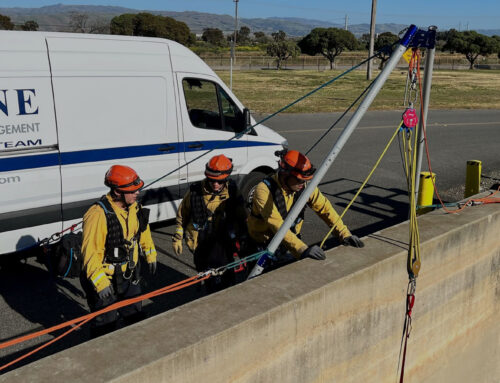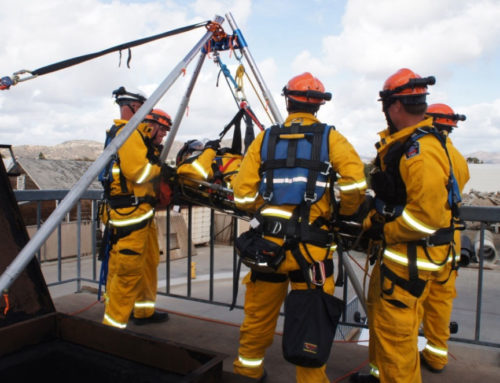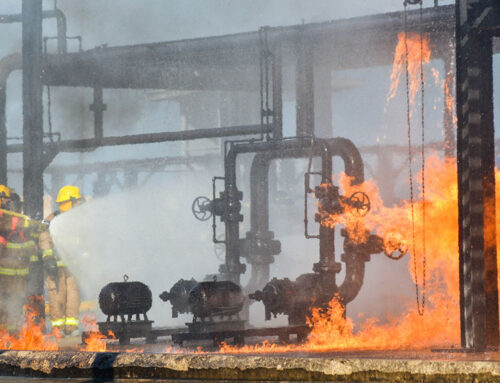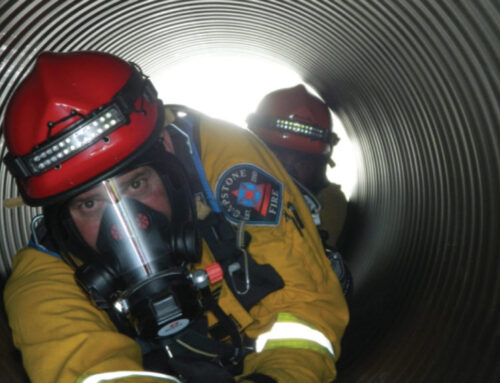Occupational safety and health is a concern for an employers and employees worldwide. Many countries have established regulatory bodies that are regularly enforced through the actions of special agencies. In the US and its territories, the Occupational Safety and Health Administration (OSHA) and Mining Safety and Health Administration (MSHA) is the regulatory body for a clear majority of industries. This post will give a brief overview of occupational safety regulatory bodies of the US, Canada, and the EU and introduce the world’s first international standard for occupational safety.
The United States of America
The OSHA and MSHA are the two entities charged with regulations of general industry, agriculture, construction, maritime, and mining. Each industry has standards they must follow as a code of conduct or for instruction of how to protect workers, while operating their business. There are exceptions to who is covered by OSHA, such as farmers with a family operated business, self-employed people, and public-sector workers for state and local governments.
There are 22 states or territories that have OSHA-approved State Plans covering private, state, and local government workers. Five other states and one US territory have OSHA-approved State Plans covering state and local government workers only. Therefore, federal OSHA has no jurisdiction for worker protection and it is the responsibility of the government entity to protect its own workers from workplace hazards.
OSHA encourages employers to identify hazards and correct them or control them, so workers will not come into contact with harmful substances. Compliance enforcements are used to hold businesses accountable through fines and abatement schedules. In severe cases, violators can have prison times and fines for willfully putting workers lives in danger.
However, the future of OSHA is more compliance assistance through strategic partnership, Voluntary Protection Programs (VPP), and Safety and Health Achievement Recognition Programs (SHARP). The agency will still utilize emphasis programs for identified high risk industries for compliance enforcement. Additionally, compliance enforcement will be targeted by self-reporting of injury and illnesses on an annual injury logs.
Canada
In Canada, there are 10 provincial, 3 territorial, and 1 federal jurisdictions for Occupational Health and Safety (OH&S) regulations. The federal jurisdiction is for employees of the federal government including Crown agencies and corporations across Canada. Each jurisdiction has its own legislation that governs general rights and responsibilities of the employer, the supervisor, and the worker. Additionally, there is a special “right-to-know” legislation for hazardous materials in the workplace call Workplace Hazardous Materials Information System (WHMIS). This system has a comprehensive program for gaining information on hazardous products intended to use in the workplace (Canadian Centre for Occupational Health and Safety (CCOHS), 2018)
Jurisdictions in Canada each have an Occupational Safety and Health Act, which applies standards to workplaces with the exception of some farming operations, private home for the self-employed, and other employers as specified by the specific jurisdiction. Enforcement and administration activities are performed by entities such as:
- Worker compensation boards
- Worker safety commissions
- Ministry or Department of Labour
The CCOHS cites “approximately 6% of the Canadian workforce fall under the OH&S jurisdiction of the federal government. The remaining 94% of Canadian workers fall under the legislation of province or territory where they work”.
European Union- The European Agency for Safety and Health (EU-OSHA)
The EU-OSHA (an agency of the European Union) is a network of states that consists of the European Free Trade Association (EFTA) states, candidates, and potential candidate countries (European Agency for Safety and Health at Work, 2018). These member countries (Focal Points) are (EU-OSHA, 2018):
- Austria
- Belgium
- Bulgaria
- Croatia
- Cyprus
- Czech Republic
- Denmark
- Estonia
- Finland
- France
- Germany
- Greece
- Hungary
- Ireland
- Italy
- Latvia
- Lithuania
- Luxembourg
- Malta
- Poland
- Portugal
- Romania
- Slovakia
- Slovenia
- Spain
- Sweden
- The Netherlands
- United Kingdom
EFTA Countries
- Iceland
- Liechtenstein
- Norway
- Switzerland
Candidate Countries
- Albania
- Montenegro
- Serbia
- The former Yugoslav Republic of Macedonia
- Turkey
Potential Candidates
- Bosnia and Herzegovina
- Kosovo under UNSCR 1244/99
EU-OSHA share information throughout the organization to create a healthier, safer, and more productive work environment for all members. Each focal point votes to adapt EU-OSHA work programs, but they use their own network of government bodies, workplace representatives, and employer organizations. The EU treaty uses directives as a legal act that is binding and obligates member states to transpose directives into law within a set deadline (EU-OSHA, 2018). Member state can have stricter measures of OH&S, but not less stringent.
The Directive 89/391- OSH “Framework Directive” of June 12, 1989 created a framework to:
- Establish equal level of safety and health for worker (with the exception of certain public and military services)
- Makes employers take measures to prevent injury and illness for their workers
- Assess for risks and make worksite adjustments to eliminate or control hazards
Other Directives are:
- Workplace, equipment, signs, personal protective equipment
- Exposure to chemical agents and chemical safety
- Exposure to physical hazards
- Exposure to biological agents
- Provision on workload, ergonomical, and psychosocial risks
- Sector specific and worker related provisions
International Organization of Standards 45001 (ISO/DIS 45001.2)
ISO 45001 is the first international OH&S Safety Management System (SMS), with its final publication was released March 2018. This publication gives an organization the opportunity to utilize a globally vetted framework to incorporate an exemplary OH&S SMS to their existing core business process. This system empathizes the importance of leadership accountability and worker participation for all of the OH&S activities.
In organizing and implementing the ISO 45001.2 standard, the business can use the Plan-Do-Check-Act (PDCA) model in every facet of the new standard. PDCA is a systemized why of continuous improvement for all activities of a company.
- Plan-“Planning” activities include, but are not limited to:
- Corporate safety vision statement
- Budgeting for safety
- Creating an implementation team
- Setting safety objectives based on proactive and leading indicators (such as near miss reporting and good catch reporting)
- Risk analysis
- Do- “Doing” activities include, but are not limited to:
- Safety work practices
- Job Hazard Analysis (JHA)
- Safety committees
- Safety written programs
- Check- “Checking” activities include, but are not limited to:
- Accident investigations
- Behavioral based safety
- Worksite audits
- Inspections
- Performance evaluations
- Act- “Acting” activities include, but are not limited to:
- Change analysis (Management of Change/MOC)
- Worker training and retraining
- Revision of safety procedures as per accident investigation recommendations
- Performance evaluations with abatement of deficiencies
Companies can now seek to have an ISO 45001 certification to prove compliance of each clause of the international standard.
Although, each country has its own ideology for OH&S, the overall goal is to protect worker health and reduce at risk situations. Compliance-based safety management is one way for an organization to keep itself from being cited from a regulatory agency. Although, companies with a goal for excellence will transcend compliance and seek a safety culture that values low risk activities.
Learn more about our project safety specialist services for consultation and oversight.






